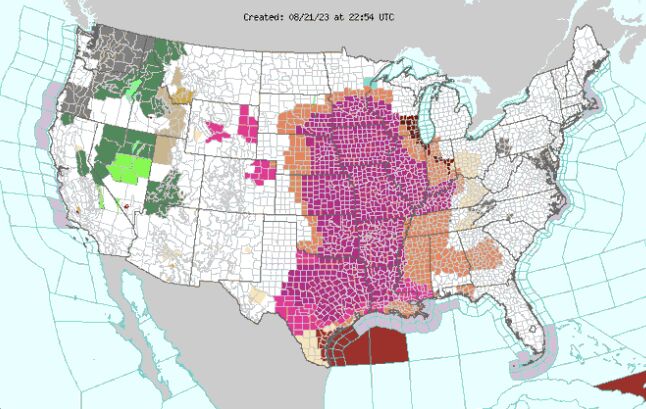Deadly Heatwaves Ravage Central US: Infrastructure and Public Safety at Risk
Deadly heatwaves sweep across the central United States, causing infrastructure strain, power grid threats, and heat-related deaths. Urgent action is needed to protect public health and infrastructure from extreme weather events.
Deadly heatwaves have been sweeping across the central United States, posing threats to infrastructure and public safety. The scorching temperatures, which have reached record-breaking levels, have caused road buckling, water system strain, and power grid threats in many areas. From New Orleans to Minneapolis, heat warnings and advisories have been issued, affecting millions of people. The extreme heat has resulted in numerous heat-related deaths, including a tragic incident in Nebraska where a 1-year-old child died after being left in a hot van.
Chicago just recorded its 2nd highest heat index on record of 116°F as the Midwest bakes under an oppressive heatwave.
— Colin McCarthy (@US_Stormwatch) August 23, 2023
Heat indices have locally climbed as high as 125-130°F across northern Illinois and eastern Iowa. pic.twitter.com/OiWSWXSsNc
Louisiana alone has reported 25 heat-related deaths this summer, double the average number in recent years. According to experts, the heat is becoming dangerous for those without access to air conditioning. Cities in Texas and Louisiana have experienced temperatures exceeding 110 degrees Fahrenheit (43.3 degrees Celsius) more frequently than at any time since World War II. The relentless heat has impacted states from Florida to New Mexico.
The Electric Reliability Council of Texas (ERCOT), responsible for managing the power grid, has urged residents to conserve energy due to high demand and low reserves. While the grid has so far held up, experts warn that prolonged heat could strain the system similar to an overheating car on a long trip. Infrastructure, too, is facing challenges under the extreme strain of enduring and recurring heatwaves caused by climate change. Union Pacific, for instance, has implemented speed restrictions across its expansive track network to reduce the impact on rail during hot weather.
Rising temperatures may result in billions of dollars of road maintenance and replacement costs in the U.S. by 2040, with Texas, California, and Illinois expected to bear the brunt of the damage. Texas, in particular, has already witnessed numerous water line breaks and roadway issues due to the heat. Schools are also feeling the heat, with students enduring sweltering classrooms or having their school days shortened. In some cities, classes have been delayed or ended early to protect students from the extreme temperatures. Furthermore, nearly 36,000 schools across the country need to update or install HVAC systems to ensure safe and comfortable learning environments, according to a U.S. Government Accountability Office report.
The heat has also strained cooling systems, as evidenced by a nursing home in Kansas City that was forced to evacuate its residents after the air conditioning failed. Seven COVID-19 patients were taken to hospitals for treatment. Sadly, the facility in question previously faced complaints, raising concerns about the level of care provided. Additionally, cities like Houston and San Antonio have witnessed a surge in water leaks and pipe damage due to the combination of high temperatures and a lack of rain.
Authorities are endeavoring to address these issues promptly, but the growing demand and increase in leaks require additional resources. While some areas in North Dakota experienced cooler temperatures, much of the central U.S. remains under the grip of scorching heat. The coming days are expected to bring even higher temperatures, exacerbating the challenges faced by communities and infrastructure alike.
As the heatwave persists, it emphasizes the urgent need for climate resilience and the implementation of effective measures to protect public health and infrastructure from extreme weather events.




